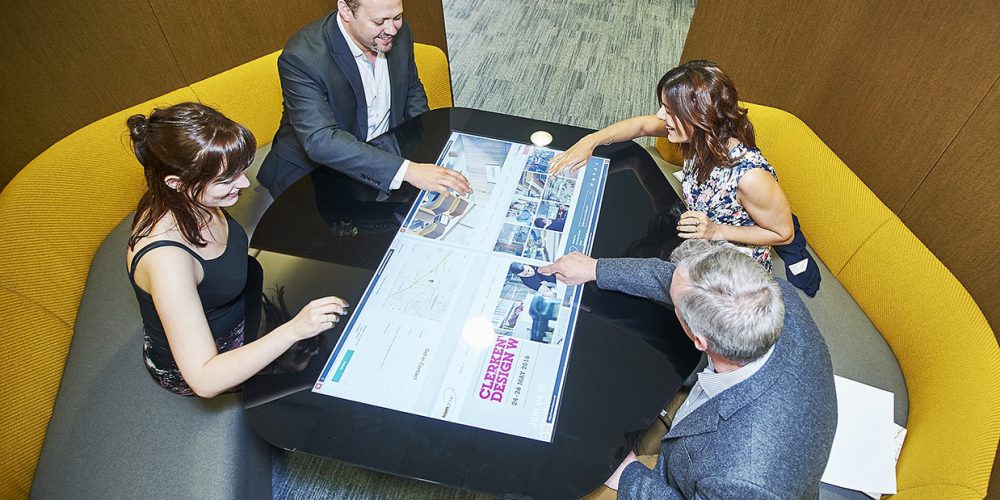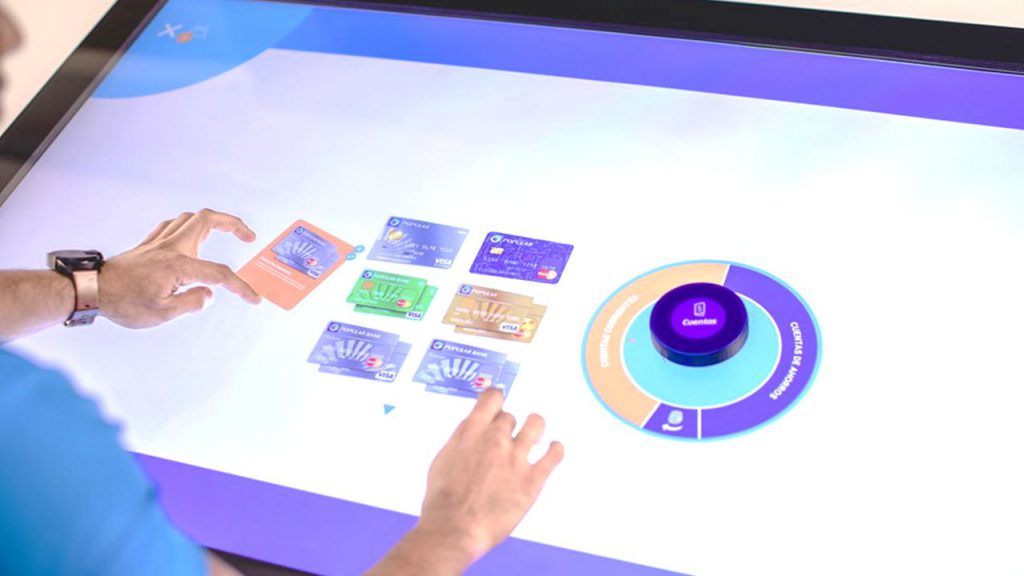Focus on PropTech: The growing demand for interactive, connected spaces
As innovators at the boundary between digital and real-world experiences, Croydon-based Quintessence reflects on the growing demand for delightful, connected spaces.

My name’s Rob Bosher and I run Quintessence, a Croydon based company that’s part of a growing ‘connected spaces’ movement.
Together with our partners, we pioneer innovative interactive experiences for leading brands and businesses. Our core offer lies in building fully integrated touchscreen displays, apps and interactive content to create rich, engaging experiences for wide-ranging use cases from marketing displays to collaborative meeting presentations, and in a wide range of sectors from property development to higher education.
This means we work at the cutting edge both of how people want to interact with digital information in physical spaces, and of what the latest technology is capable of – which in turn means we are continually evolving as a company! The past 4 years have been a truly exciting time for us as we’ve pushed the boundaries of what we do, pioneering new technology to enhance our clients’ spaces and workplaces, and at the same time being pulled in new directions by demand for new ideas and products – leading us to re-appraise our role as a technology-led, disruptive innovator more broadly.
That’s why, increasingly, we see ourselves as part of a growing movement towards “connected spaces” – an umbrella term spanning the exciting and rapidly evolving fields of smart cities, smart buildings and smart workspaces.
It’s a movement driven by customers’ and employees’ ever-increasing expectations for smart, connected and interactive experiences wherever they go. We now regularly see end users from all walks of life, whose expectations are already way ahead even of what the technology can do, and who are completely unfazed by new interaction patterns and technological firsts. Millennials especially are transforming the nature of workplaces, with raised expectations of what the experience of working life should be like, and setting new levels of expectation for digitally connected, interactive and intuitive services in almost every context.
It’s a global movement, too. Interestingly, some of our most technically advanced and pioneering deployments have been in developing countries, where we get a blank canvas to work with, clean of legacy and political infrastructure.
Here are three projects Quintessence has delivered that I’d like to highlight by way of example:
A smart city project for the Lexicon Shopping Centre in Bracknell
![]()
We created a mobile app for wayfinding, so visitors can navigate the Lexicon shopping centre with ease, find retailers, seek offers and pay for parking seamlessly. By integrating the app with parking and footfall counting systems, we were able to offer an intelligent connected experience throughout the customer’s whole journey as they travel to, around and then depart from the centre, underpinned by a central reporting system. The system provides real-time trend analysis, optimising decisions by the management team and connecting the public with seasonal offers and promotions and options, such as where to park based on real-time trends.
A smart building project for Banco Popular Dominique in the Dominican Republic

We were tasked with the software, hardware, furniture design, development and implementation of large format digital touch screen services into a prototype bank branch that was stripped of traditional counter services and designed to provide online-only services in-store. The branch provided choice and comparison of products and services using Quintessence systems, with support from branch staff. The connected experience gave customers the ability to engage both at home and in the branch with ease, with systems connected to normal banking infrastructure for feedback and assessment. The technology deployed in this project is one of the most cutting-edge retail deployments to date, setting a new tone for digital retail experiences that is not yet matched in the UK!
A smart workplace project at Philip Morris International

Philip Morris needed a way to present complex scientific research about the comparisons between traditional smoking compared with their new range of e-cigs to key stakeholders, staff and the public in a comprehensible and engaging way, including in multiple languages. We developed innovation spaces in different market countries where content could be “thrown” to connected display screens in order to compare and contrast multiple content in different languages with ease.
Where we’re heading next
The current challenges we face lie in finding ways to more effectively measure how fast and hard to push new technology and experiences, to keep pace with users’ expectations and stay just that one step ahead of what they want next. We’re also exploring better ways to measure the success of our solutions after deployment.
One way we’re dealing with these challenges is by deploying Quintessence sensors in spaces ahead of any transformation. These tell us how occupants use a space, before we design the interactive solution, so we can apply the right technology and monitor its effect throughout.
What’s already clear from our experience though, is that demand for connected spaces is growing rapidly and will continue to grow, both from consumers and employees.
It’s therefore vital that places and organisations invest in their connected digital infrastructure. Your users, staff and customers are already digitally advanced, demanding delightful and intuitive digital experiences, and expecting to be able to interact with public and commercial spaces with ease. In the workplace, old rules of working in silos, managing handoffs and playing ping-pong with emails don’t apply any more – the future is in real-time collaboration and teamwork.
It’s essential, then, that we all start listening to the next generation’s requirements for interactive spaces, and empower them to shine.
For brands and organisations, the payback for getting this right lies in real-time analysis of how people use our connected spaces. Only with this data can we then learn and adapt our spaces rapidly to the needs, wants and wellbeing of the connected community, while increasing productivity and providing greener and more efficient places to live work and play.
Getting it right it is a win for all!

